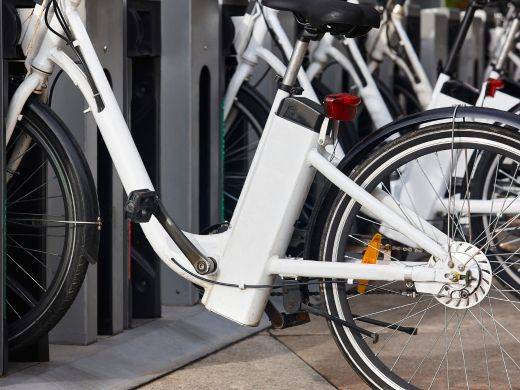
The lifespan of an e-bike battery depends on usage, maintenance and battery type, and typically lasts 3 to 5 years before it may need to be replaced, which equates to approximately 1,000 to 1,500 charge cycles.
This article will look at the factors that affect the life of these batteries and how proper maintenance can extend their useful life.
What Are the Types of Electric Bicycle Batteries?
Electric bike typically use several different types of batteries, each with different lifespans and characteristics. Here are some common types of electric bicycle batteries:
Lithium-ion batteries: These batteries are lightweight, low-maintenance, and have no memory effect. They typically last 1,000 to 1,500 charge cycles, or about 3 to 5 years.
Nickel-Metal Hydride (NiMH): Nickel-Metal Hydride batteries are heavier and have lower energy density, but they are more environmentally friendly and generally cost less than lithium-ion batteries. It typically lasts between 500 and 1,000 charge cycles, or approximately 2 to 4 years.
Lead-acid batteries (Lead Acid): Lead-acid batteries are very low cost, but they are heavy, bulky and have low energy density. Lead-acid batteries have a shorter life, typically lasting 200 to 500 charge cycles, or about 1 to 3 years.
Lithium Polymer (LiPo): Lithium polymer batteries are a variant of lithium-ion batteries that cost more and typically last 500 to 1,000 charge cycles, about 3 to 5 years.
What Factors Affect Battery Life?

The length of electric bicycle battery life can be affected by many factors, including:
Battery type: Battery type has a significant impact on lifespan. Lithium-ion batteries are the most commonly used type on the market today because of their high energy density, long cycle life, and low self-discharge rate. Different brands and qualities of batteries will have different performance and durability.
Charge and discharge cycles: Each battery has a predetermined number of charge and discharge cycles, usually between 1,000 and 1,500 times. Each charge and discharge of a battery slightly reduces its ability to store energy, so frequent charging and discharging shorten the overall life of the battery.
Charging habits: The charging habits of a battery also have an impact on its lifespan. For example, frequently charging the battery to 100% or discharging it to 0% may accelerate the decline of battery capacity.
Temperature and climate conditions: Battery performance and life are greatly affected by temperature. Extreme high or low temperatures can damage the battery and shorten its life. Too high a temperature will accelerate the decomposition of chemicals inside the battery, while too low a temperature will reduce the battery's effective capacity.
Frequency of use and riding habits: The frequency of battery use and riding habits of the e-bike will also affect battery life. Heavy loads, frequent starts and stops, and prolonged use of electric assist will increase the burden on the battery and may cause the battery to age faster.
Examples of Service Life of Electric Bicycle Batteries

| Brand | Model | Battery Type | Typical Battery Life | Total Lifespan |
| Giant | Explore E+ | Lithium-ion | 1000 charge cycles | 5-6 years |
| Specialized | Turbo Levo | Lithium-ion | 800 charge cycles | 4-6 years |
| Rad Power | RadRover | Lithium-ion | 800 charge cycles | 4-5 years |
| NAKTO | Cruiser | Lithium-ion | 800-1000 charge cycles | 5-6 years |
How to Extend the Life of Your E-Bike Battery?
Conclusion
In short, the service life of an electric bicycle battery will vary greatly depending on a variety of factors. Typically, e-bike batteries have a lifespan of 3 to 5 years or approximately 1,000 to 1,500 charge cycles.
To maximize the life of your e-bike battery, it's important to charge the battery properly, avoid extreme temperatures, maintain the battery regularly, and adjust usage habits to reduce stress on the battery.
Frequently Asked Questions
1. How do I know when to replace my e-bike battery?
You can pay attention to whether the battery life is significantly reduced, whether the charging time is abnormally longer, whether the battery cannot be fully charged, whether the voltage is unstable, and whether there are swelling, cracks or leaks in the appearance of the battery.
These are signs that the battery may be old or damaged, and if you encounter these problems it is recommended to contact a professional repair or consult the manufacturer for appropriate disposal recommendations.
2. Will cold weather affect e-bike battery life?
Yes, cold weather can temporarily reduce battery capacity and performance. It is recommended to place the battery indoors and keep it warm before use in colder months.
Related reading: How to replace batteries for electric bikes
Enter your email address for new arrivals, discounts, promotions, and more!
